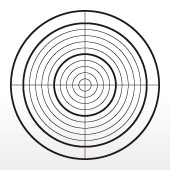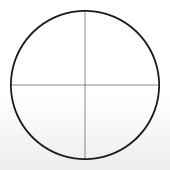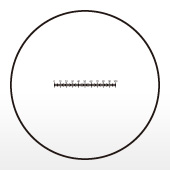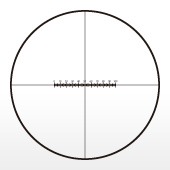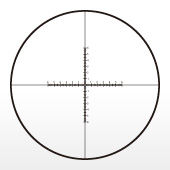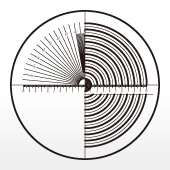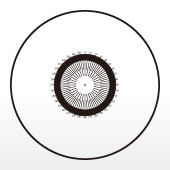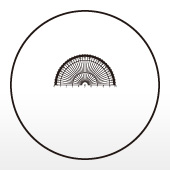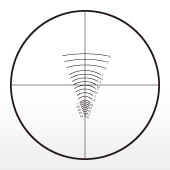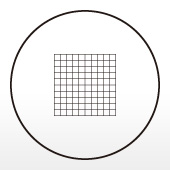Eyepiece micrometers
By mounting the eyepiece micrometer onto a microscope, it can be applied to a wide range of needs, including measuring, inspection, measurement, alignment, positioning, etc.
Micrometers can be custom-produced to the customer’s individual specifications. (Miruc has already produced over 1,000 types of custom ordered micrometers.)

31-A
12 mm scale in 120 increments (minimum increment 0.1 mm) Crosshairs, 55°, 60°, 90°, 120° angle lines

31-E
10 mm scale in 100 increments on horizontal crosshairs (minimum increment 0.1mm)

31-F
12 mm scale in 120 increments on vertical and horizontal crosshairs (minimum increment 0.1mm)

31-G
Angles, concentric circles, scales
Scales divided equally (minimum increment 0.5mm)
Specifications
Glass diameter: φ24
Material: Blue plate glass
Plate thickness: 1mm
Vapor deposition: Top surface
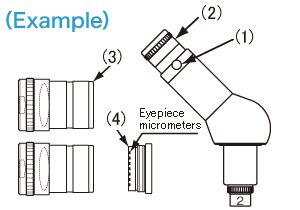
How to remove the eyepiece micrometer
1. Loosen the locking screw (1) and the whole eyepiece lens (2) can be removed from the microscope optical system.
2. To remove the eyepiece micrometer (scale glass), unscrew the eyepiece lens (3) illustrated at left and take off the holder. Hold the scale glass on the holder in place and continue to unscrew the frame. (4) Now the eyepiece micrometer can be removed.
Note that, if an eyepiece micrometer is ordered together with a measure scope, it is properly fitted in our workshops before shipment. If you have purchased the eyepiece micrometer by itself, or need to replace the eyepiece micrometer, remove/ attach the unit as described above.
1 Scale reading conversion and caution
The eyepiece micrometer scale readings can be calculated by taking the smallest increment cut on the scale and dividing it by the magnification of the objective lens.
As an example, the 31-E ( 10 mm in 100 increments = minimum increment 0.1 mm) would be read as follows.
With objective lens 2x, 0.1 ÷ 2 = 0.05 mm (minimum increment)
With objective lens 5x, 0.1 ÷ 5 = 0.02 mm (minimum increment)
With objective lens 10x, 0.1 ÷ 10 = 0.01 mm (minimum increment)
We often receive requests to manufacture a special order micrometer with "the first pitch being the smallest". If the first pitch needs to be the smallest, this can be done by replacing the objective lenses, as described above. However, care needs to be taken when making the increments smaller in actual processing. If the smallest increment is made 0.05 mm, which is half of the normal pitch, it can still be read with the naked eye, but any smaller than 0.05 mm would be difficult to judge with the naked eye.
If objective lens 20x is used, pitch of less than 0.05 mm can be read easily, but there may be limitations in actual use, such as a much narrower field of vision when compared with the standard objective lens 10x.
Therefore, the reading of a single increment of the eyepiece micrometer depends on the relationship between the pitch cut in actual processing and the objective lens magnification.
We would advise our customers to give careful consideration to these calculations when selecting micrometers to give correct measurements as required, and when making special orders.

